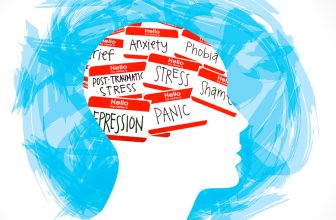You’ve probably been told that eating high protein foods is the key to losing weight and keeping it off. And while this may be true in general, there are a few caveats you should know about when it comes to high protein diets. In this blog post, we’ll look at some of the benefits and drawbacks of high protein diets and offer our own recommendations for a diet that is both high in protein and low in fat. We think you’ll find our tips helpful as you try to achieve your weight loss goals.
The Basic Principles of a Low Carb Diet
A low carb diet is a popular weight loss plan that involves eating fewer carbohydrates and more protein and fat. A low carb diet can help you lose weight by helping you to burn more calories.
Low carb diets can be especially helpful for people who want to lose weight fast. On a low carb diet, you will likely lose weight faster than on a normal diet because your body will have to use more energy to digest and process the food.
You should aim to eat at least 50 grams of carbs per day on a low carb diet. You can get your carbs from plants, such as grains, vegetables, fruit, and beans, or from foods that are high in sugar, such as sweeteners and processed foods.
It is important to avoid carbohydrates that are high in sugar or processed foods because these types of carbs will make it harder for you to lose weight. It is also important to limit your intake of saturated fat and cholesterol, which are found mainly in animal-based products.
High Protein Foods
There are many high protein foods that you can add to your diet to help increase the amount of protein in your diet. These foods include meats, fish, poultry, eggs, beans, nuts and seeds. When choosing high protein foods make sure that they have a low fat content so that you are not putting too much saturated fat into your body.
How Much Protein Should You Eat?
How Much Protein Should You Eat?
When it comes to dieting, protein is one of the most important nutrients you need to include in your daily intake. In fact, protein is critical for weight loss and overall health.
Protein helps control appetite and cravings while also promoting muscle growth and maintenance. Additionally, a high-protein diet has been linked with decreased risk of chronic disease such as heart disease, type II diabetes, and some forms of cancer.
So what should you consider when determining how much protein you should eat? The American Dietetic Association (ADA) recommends at least 46 grams per day, which is the equivalent of about 6 ounces of meat, poultry, fish or shellfish, or an additional 24 grams of protein from plant sources like nuts and seeds. However, there’s no one-size-fits-all recommendation when it comes to protein intake – what works best for one person may not be advisable for another. So take into account your own physical activity level, dietary preferences, and overall health goals when figuring out how much protein you need each day.
Fatty Acid Sources for Protein Intake
Fatty acids are essential for human health and can be found in many foods. The type of fatty acid you need for your diet depends on the goals of your weight loss or fitness program.
Some people, especially athletes, may need a higher ratio of Omega-6 to Omega-3 fatty acids to optimize their performance. For those individuals, consume more fatty fish, nuts, seeds and olive oil.
For those who want to lose weight or prevent disease, a lower ratio is optimal. This means you will need to decrease your intake of omega-6 fatty acids and increase your intake of omega-3s. Some good sources of omega-3s are nuts, seeds and avocado.
To get the most benefit from your fatty acid consumption, it is important to understand how many grams of each type you should be eating each day. You can find this information in charts such as the ones provided by the government’s website dietaryreference intakes (DRIs).
Vegetables and Fruits as Good Sources of Protein
There are a number of vegetables and fruits that are good sources of protein. Vegetables high in protein include spinach, kale, broccoli, and peas. Fruits high in protein include apples, oranges, and bananas. There are also other common vegetables and fruits that are good sources of protein that may not be as well known such as Brussels sprouts, tomatoes, sweet potatoes, and avocados.
When choosing high-protein vegetables and fruits for your dieting plan it is important to consider the type of protein they contain. Some vegetables and fruits contain all three types of proteins which can be beneficial for overall health. Other vegetables and fruits only contain one type of protein which might need to be supplemented with another source of protein to meet the daily recommended amount. It is also important to keep in mind the calorie content when selecting high-protein foods since most have a higher calorie count than low-protein foods.







